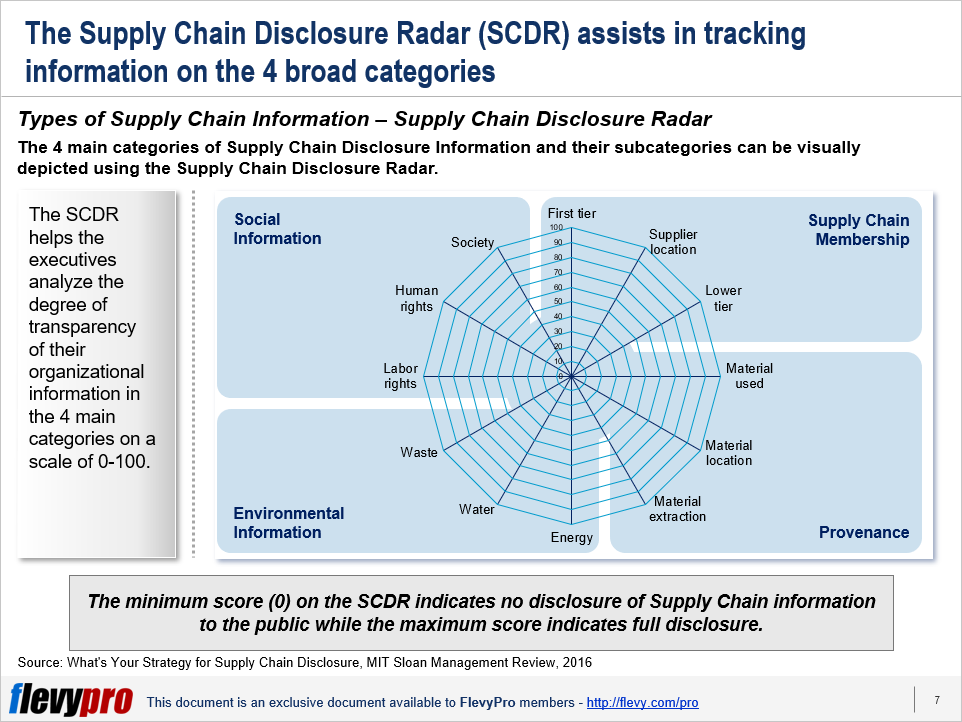Supply Chain Management across industries has become way too complicated and globalized today. Since the popularity and use of Social Media has grown, organizations are increasingly getting under pressure to disclose their information publicly. This pressure on information transparency has reached a level where external stakeholders expect to know the details of an organization’s Supply Chain practices much more than what is typically required to disclose legally.
Executives are finding it hard to deal with this situation. A majority of them have a limited understanding of the salient features and capabilities of their own Supply Chains, lack the expertise to gather and report Supply Chain data, and fail to develop a Supply Chain Information Disclosure Strategy.
To begin with, they need to first realize the forces that are pushing this trend for information transparency—government regulations, laws, competitors’ best practices, and non-governmental organizations (NGOs). NGOs often highlight media campaigns to expose poor Supply Chain practices carried out by organizations. These campaigns may have adverse effects on brand reputation.
Once a fair understanding of these forces has been established, only then executives can develop approaches to deal with these information transparency trends effectively.
Supply Chain Information Categories
The growing demand and understanding of organizations to make Supply Chain information transparent warrants them to have an in-depth know how of what is required to accomplish this and the constraints therein—e.g., their data collection capabilities, the resources required to establish reporting systems, the technology requisites, and clearly defined standards for reporting systems.
Supply Chain Management experts identify 4 categories of Supply Chain information that organizations can publicly disclose:
- Supply Chain Membership
- Provenance
- Environmental Information
- Social Information
1. Supply Chain Membership
This category pertains to information related to the suppliers. It includes basic supplier information, e.g., the names of first-tier direct suppliers and supplier locations. For instance, Nike shares a list of its global suppliers for the entire product range with names, locations, workforce composition, and subcontracting status of every supplier.
2. Provenance
This category entails information related to ensuring compliance of materials used to produce products with regulatory standards. Specifically, this includes source (material) locations, material extraction practices, and compliance with safety and quality standards.
3. Environmental Information
This category pertains to reports on environmental measures, including carbon and energy usage levels, water use, air pollution, and levels of waste in the Supply Chain.
4. Social Information
This category entails reports on labor policies (health & safety conditions, work hours), human rights data, and social impacts of the Supply Chain (community involvement and development work).
Supply Chain Information Transparency Strategies
There is no one-size-fits-all approach to information disclosure that suits every firm. Once senior management has evaluated the leading best practices on types of Supply Chain information that can be shared publicly, their emphasis should be on determining and agreeing on the level of Supply Chain information disclosure that is ideal for their organization. Senior executives can select a viable strategy from the following 4 typical Supply Chain Information Disclosure Strategies:
- Transparent
- Secret
- Distracting
- Withheld
Transparent
This strategy involves maximum public availability of all Supply Chain information. Companies following the “Transparent” strategy regard information disclosure as a core competence. They take full disclosure of their Supply Chain information as a commitment to satisfy external stakeholders.
For instance, Nike was criticized throughout the 1990s for poor working conditions in its Supply Chain, but now it is recognized as a leader for its responsible supply chain membership, provenance, environmental, and social sustainability information disclosure.
Interested in learning more about the remaining Supply Chain Information Transparency Strategies? You can download an editable PowerPoint on Supply Chain Information Transparency Strategies here on the Flevy documents marketplace.
Are you a Management Consultant?
You can download this and hundreds of other consulting frameworks and consulting training guides from the FlevyPro library.

Comments